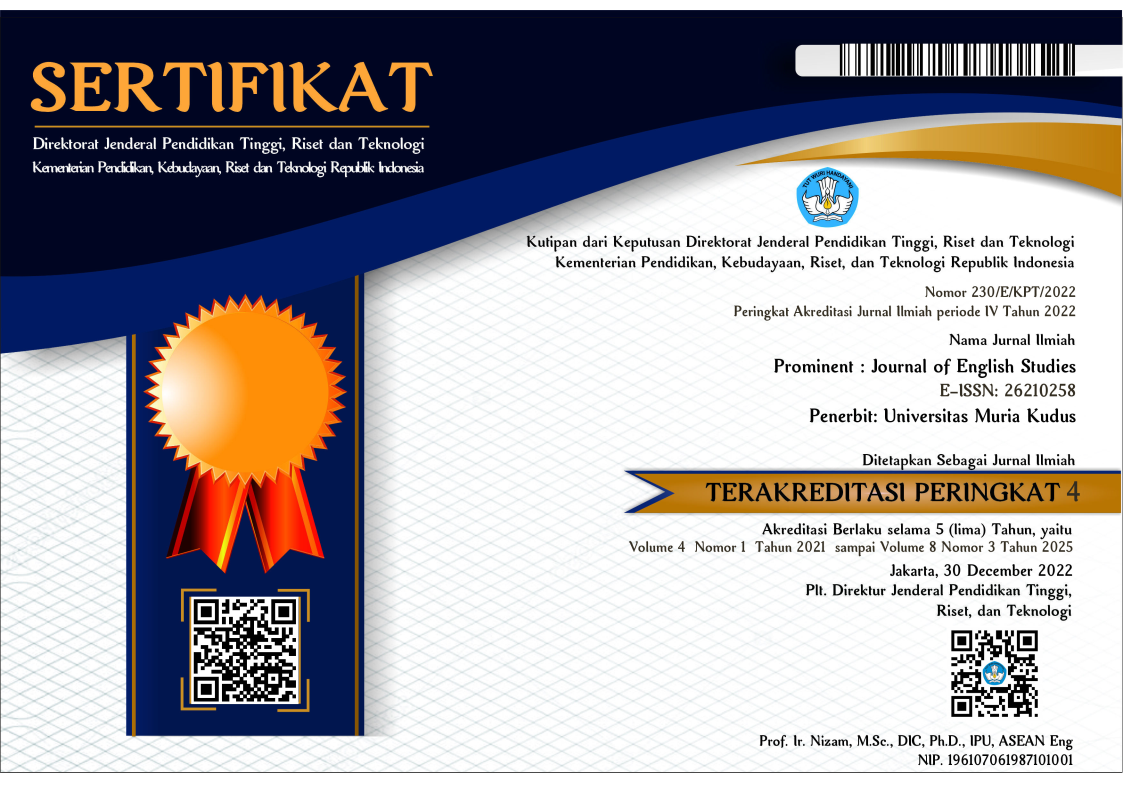CLIL AS A METHOD IN TEACHING SPORT COLLEGE STUDENTS THROUGH BILINGUAL CLASS PROGRAM
Abstract
The internationalization of institutions proclaimed by Universitas Negeri Semarang has led to the emergence of bilingual class program in every study program. The challenge faced when there are bilingual classes is the ability of lecturers in several majors to provide courses in both English and Bahasa. This study aims at answering the challenges currently faced by UNNES when providing a bilingual class. Then, it is to illustrate and describe the implementation of Content and Language Integrated Learning (CLIL) on the tennis class at the Faculty of Sport Science. The result show that combination of CLIL and SFL was chosen because CLIL teaching method has two simultaneous focuses on content and language while SFL is a teaching method emphasizing the deconstruction of academic genres texts as well as explicit teaching on text features. It is expected that the combination of the two can produce teaching methods that emphasize course material and mastery of English as a medium of instruction in a balance and easier to understand due to the explicit deconstruction of academic texts.
Full Text:
PDFReferences
Bernstein, B. 1975. Class, Codes, and Control Volume 3: towards a Theory of Educational Transmissions. London: Routledge and Kegan Paul.
Butt, D.R, Fahey S. Spinks and C, Yallop. 1995. Using Functional Grammar: an explorer’s guide. Sydney: Macquirie University, NCELTR
Cohen, A. 1975. A Sociolinguistic Approach to Bilingual Education. Rowley, Mass.: Newbury House.
Collier, V., and C. Ovando. 1985. Bilingual and ESL Classrooms: Teaching in Multicultural Contents. New York: McGraw Hill.
Coyle, D. (2007).'Content and Language Integrated Learning: Towards a Connected Research Agenda for CLIL Pedagogies. The International Journal of Bilingual Education and Bilingualism.10 (5), 543–562.
Coyle, D., Hood, P., & Marsh, D. 2010. CLIL: Content and language integrated learning. New York, NY: Cambridge University Press.
Eggins, S. 1994. An Introduction to Systemic Functional Linguistics. London: London
Press
Finnochiaro, M., & C. Brumfit. 1983. The Functional-Notional Approach: from Theory to Practice. New York: Oxford University Press.
Gajo, L.y Serra, C. 2002. Bilingual teaching: Connectinglanguage and concepts in mathematics. EnD. So / G. Jones (eds.). Education and Society in Plurilingual Contexts. Brussels: VUB Brussels University Press, páge.75--‐95.
Gerrot, W and Wignell P. 1994. Making Sense of Functional Grammar. Cambridge: Gerd Stabler.
Halliday, M.A.K. 1994. An introduction to functional grammar (second edition). London: Edward Arnold.
Halliday, Michael A.K. & R. Hasan. 1990. Language, context, and text: aspects of language in a social-semiotic perspective. Oxford: Oxford University Press.
Lasagabaster, D. 2009. The Implementation of CLIL and attitudes towards trilingualism. International Journal of Applied Linguistics, 157, 23-44.
Martin, J.R. 1984b. Lexical Cohesion, Field, and Genre: Parceling Experience and Discourse Goals. In Volume 3 in the Collected Works of J.R. Martin, ed. Z. Wang, 31 – 64. Shanghai: Shanghai Jiao Tong University Press.
Martin, J.R., & Rose, David. 2005. Designing Literacy Pedagogy: scaffolding assymetries. In J Webster, C. Mathiessen & R. Hasan (eds.). Contnuing Discourse in Language. London: Continuum, 2005, 251 -280.
Munoz, Z. 2008. Developing Teacher Capacity for Serving ELLs' Writing Instructional Needs: A Case for Systemic Functional Linguistics. Bilingual Research Journal 31(1-2):295-322.
Nussbaum, M. 2002. Education for Citizenship in an Era of Global Connection. Studies in Philodophy and Education, 21, 289-303, doi: 10.1023/A: 1019837105053.
Rubtcova, M. & Valentina K. 2016. Implementation of Content and Integrated Learning (CLIL) Programmes in Public Administration: Russian Students’ and Matriculants’ Opinion about their First CLIL Experience. Teaching Public Administration Journal, Vol 34(3) 229-246.
Schleppegrell, M., Achugar, M., & Orte´ıza, T. 2004. The Grammar of History: Enhancing
Content-based Instruction through a Functional Focus on Language. TESOL Quarterly 38, 67–93
DOI: https://doi.org/10.24176/pro.v2i1.2964
Refbacks
- There are currently no refbacks.
Prominent Journal of English Studies is licensed under a Creative Commons Attribution-ShareAlike 4.0 International License.
Dedicated to:

in Collaboration with APSPBI:





